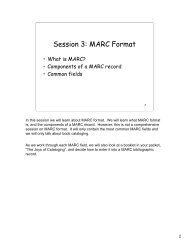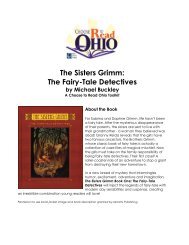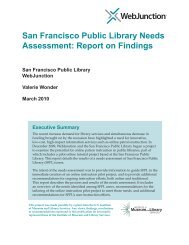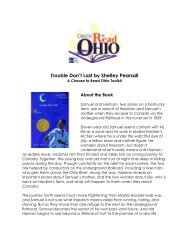THE DEWEY DECIMAL CLASSIFICATION - OCLC
THE DEWEY DECIMAL CLASSIFICATION - OCLC
THE DEWEY DECIMAL CLASSIFICATION - OCLC
- No tags were found...
Create successful ePaper yourself
Turn your PDF publications into a flip-book with our unique Google optimized e-Paper software.
Mitchell and Vizine-Goetz: The Dewey Decimal Classificationsystems, and 006.8 Virtual reality. All but the last are further subdivided. In addition,each of these classes (including the last) can be further extended by general notationalsynthesis rules as well as instructions in specific classes.Classes 000-999 are known collectively as “the schedules”; there are also six auxiliarytables (Tables 1-6) that support notational synthesis:Table 1. Standard SubdivisionsTable 2. Geographic Areas, Historical Periods, PersonsTable 3. Subdivisions for the Arts, for Individual Literatures, for SpecificLiterary FormsTable 4. Subdivisions of Individual Languages and Language FamiliesTable 5. Ethnic and National GroupsTable 6. LanguagesNotation in tables is represented in the print edition with an em dash followed by thenumber, e.g., —624 Sudan is the Table 2 number for the country of Sudan. In theRelative Index in the print edition, and throughout the current web version, the samenumber is represented byT2—624. The prefix for the table number and the em dashare removed when the notation is appended to another number (see NOTATIONALSYN<strong>THE</strong>SIS).The schedules and tables also include some numbers enclosed in square brackets andparentheses. Numbers in square brackets are not in current use. Numbers in parenthesesare optional numbers—alternate notation for a concept. Optional numbers are providedto give emphasis to a topic not given preferred treatment in the standard notation 2 . Forhttp://www.oclc.org/research/publications/library/2009/mitchell-dvg-elis.pdf Page 5 of 36.
















